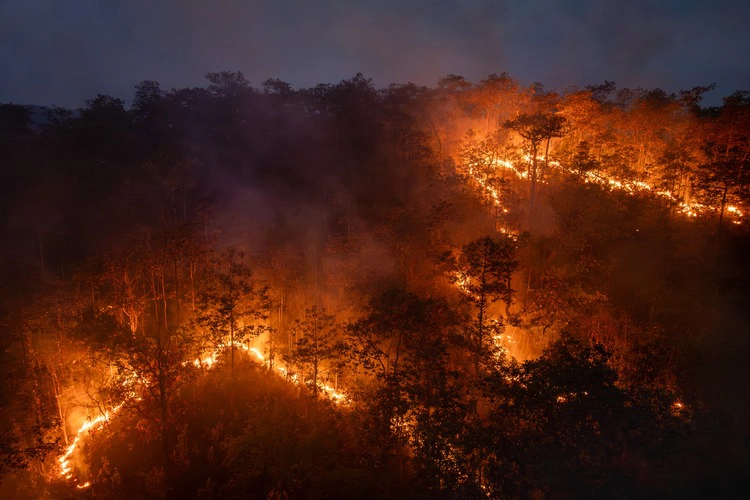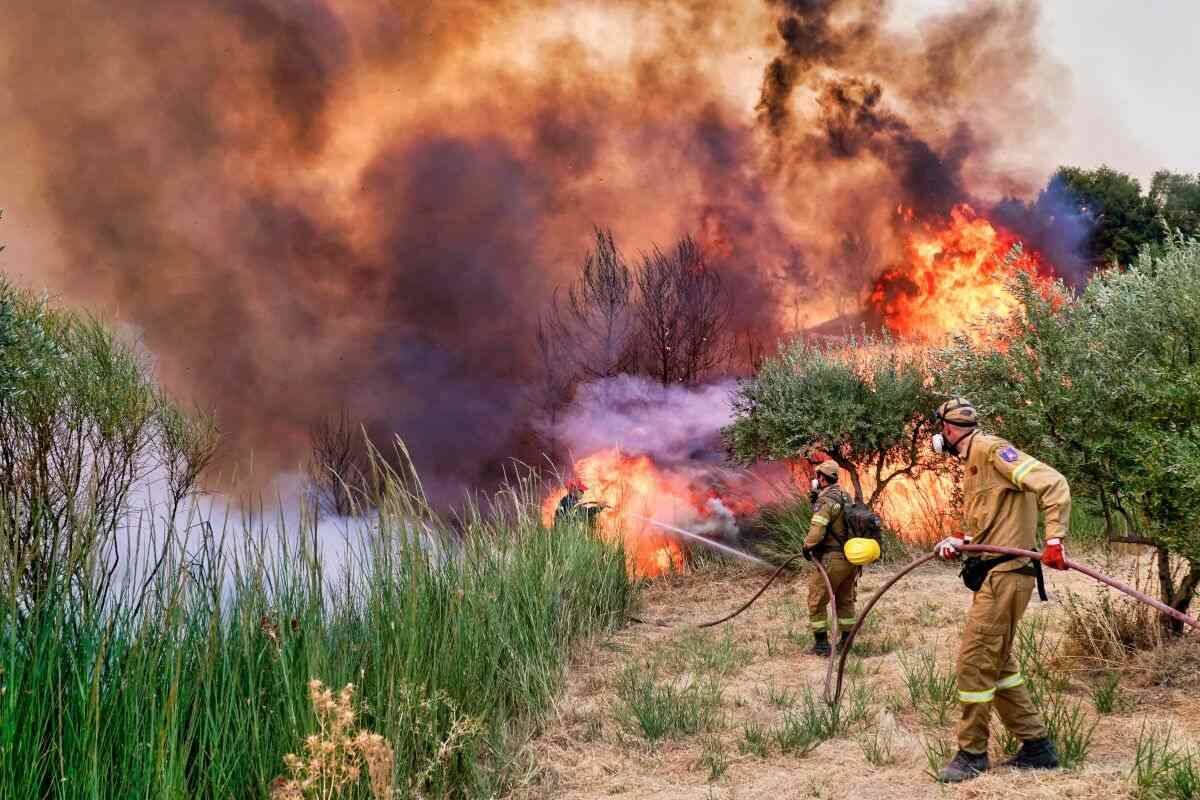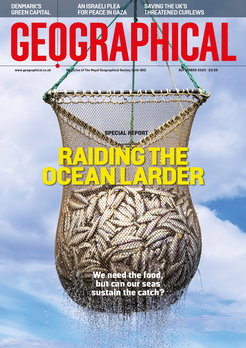
Discover the several reasons behind increasingly common wildfires around the world, including those in California
By
As devastating wildfires ravage through Los Angeles in California, the toll of these natural disasters is once again resurfacing. Firefighters are currently battling at least five major active wildfires in the state which have collectively burnt nearly 28,000 acres of land, led to at least five deaths and the destruction of almost 1,900 structures.
Related reads:
It is undeniable that record-breaking wildfires are happening with increasing regularity across the world. Between 2019 and 2020, Australia battled its worst wildfire season in recorded history and, in the summer of 2021, more than 300 wildfires spread through northeastern Siberia, burning 84,000 sq km of arctic boreal forest – an area the size of Ireland.
2023 saw wildfires on multiple continents, with the fourth largest burnt area of record in the European Union, and 2024 recorded intense wildfires in North and South America, particularly in Canada.
Throughout the United States, the area damaged by wildfires has doubled since the 1980s – and within California, eight of the state’s ten biggest fires on record have happened within the past five years alone.
How wildfires are started
Wildfires burn annually and have done so for hundreds of millions of years. These fires are unplanned and uncontrolled, occurring in the forests, grasslands and peatlands found on most of the world’s continents. They are especially common in regions where the climate is wet enough for vegetation to grow, but where there are also long periods of hot and dry weather, like in parts of Australia, Southeast Asia, South Africa, the Mediterranean and North America.
For a wildfire to start it needs three things: fuel (dry vegetation), oxygen and a heat source. Some fires are sparked naturally by lightning or the sun but, more commonly, they are created by human activity. In the United States, an estimated 85 to 90 per cent of wildfires are started by campfires, power lines, discarded cigarettes, arson and other man-made causes.
It is too soon to exactly pinpoint the cause of the latest Californian wildfires, but the California Department of Forestry and Fire Protection say ‘extreme wildfire risks’ are being caused by a combination of strong winds – known as Santa Ana winds – and low humidity in the region currently.
This combination means that moisture is able to be be ‘sucked’ out of the already dry vegetation in California in what is known as an ‘atmospheric blow-dryer effect’, increasing its flammability.
It’s not just in California where winds can play a role in exacerbating the effects of wildfires. In general, the faster the winds are, the greater the wildfire can spread. The rule of thumb is that the rate of spread is around 10 per cent of the open wind speed. For example, wind speeds of 25km per hour would suggest that during severe burning conditions, a wildfire could spread by approximately 2.5km per hour.
But the impact of the current wildfires in California is made more severe by two factors: its steep terrain allows fire to move more rapidly, making it difficult to carry out firefighter operations, and the presence of very flammable types of shrub vegetation in the state means fires can proliferate far more easily.
The map above, from the Global Forest Watch, shows all recorded fires that have happened within the last month. Different regions have different fire seasons, which are characterised by high temperatures, low humidity and often by storms and strong winds.
Not all forest fires are wildfires. Some fires are intentionally started to burn and clear space for crops, a process known as slash-and-burn agriculture, and some are prescribed burns, where planned and controlled fires are used to regulate the health of a forest or reduce the risk of a wildfire.
To some extent, wildfires are part of the annual cycle of many ecosystems. Some plants and animals have even evolved to depend on them, such as several species of North American pine that store their seeds in thick, resin-coated cones, which then open up during a fire, or the line-leaf conebush, Leucadendron linifolium, a South African evergreen shrub that requires smoke for its seeds to germinate.
Wildfires provide other ecological benefits by burning dead and decaying organic matter, which releases nutrients into the soil, making it more fertile. They thin forest canopies and undergrowth, letting more sunlight through to the forest floor which also allows seeds to germinate.
However, while the existence of some wildfires is natural and beneficial, the extent to which they are currently burning is not.
Climate change
One of the reasons behind the increased size and severity of wildfires is climate change. Violent wildfires occur in places affected by a combination of drought, high temperatures and thunderstorms, and climate change is making all of these conditions more common.
In particular, California has experienced a decades-long drought ending back in 2023, from which point trees and shrubs were able to rapidly grow, providing the vegetation required to start a large-scale wildfire. But last summer, the region experienced a hot season with subsequent little rainfall during its typically wet season. Weather conditions like this, certainly impacted by climate change, may begin to explain how such wildfires start.

However, director of the Centre for Wildfire Research at Swansea University Professor Stefan Doerr cautions that is too early to know to what degree climate change has made the Californian fires more extreme – although it is true that these set of wildfires have occurred far earlier than Southern California’s typical fire season.
Between 1978 and 2013, the overall length of wildfire seasons worldwide increased by almost 19 per cent, making them 40 to 80 days longer on average. This has led to drier vegetation which increases the risk of fires starting, the speed at which they can spread over an area and the intensity at which they burn.
Forest management
Another reason behind the increased destruction caused by wildfires across the world is that, as populations have grown, more people are now living in areas where wildfires happen, putting more homes and lives at risk.
While it may be desirable to build extensively in locations near both nature and a major city – like those affected by the Californian wildfires – Professor of Fire Science at the University of Edinburgh Rory Hadden explains how such places pose an ‘inherently higher danger area to live’.

‘Landscapes need to be managed to keep up with evolving fire danger driven by climate change,’ Hadden explains. ‘This is a huge challenge for governments as there are many political issues associated with management of wild spaces (as well as costs). California actually already has some great guidance on this but it is difficult to enforce and indeed enact sometimes.’
Historically, humans have used fire to manage their environment for thousands of years, but many countries currently suppress fires in areas where they were once allowed to burn through the understory. In the United States, 98 per cent of wildfires are contained and extinguished while they are still small. However, preventing fires from burning over larger areas means an increase in the amount of dry vegetation so that, when fire escape containment, they burn more fiercely and spread higher into the canopy, killing trees,
Similarly, prescribed burning, which has long been used in Australia as a method for preventing wildfires by reducing the amount of dry, flammable vegetation and materials, is less effective due to a smaller window of time – controlled burning can only be done in cooler, damper weather with low wind speeds, to avoid the fire getting out of control.




